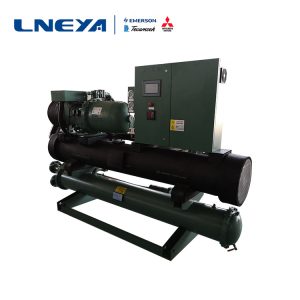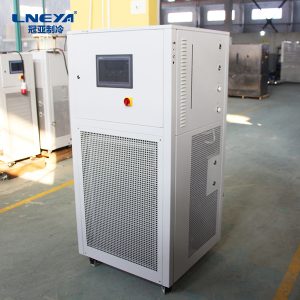The Method That Small Water Cooled Chiller Needs To Follow When Charging Refrigerant
In our life, we believe that everyone is very familiar with refrigeration. In the central air conditioning and industrial production process cooling industry, small water cooled chiller is more common. This unit is composed of a compressor in the fuselage, a horizontal shell and tube condenser, an evaporator, a thermal expansion valve, and some related parts. Under the cooperation of these auxiliary parts, the overall small water cooled chiller is compact in structure, convenient in operation and control, and is popular among the public in the market.
For refrigeration systems that do not have a high pressure reservoir and a low pressure vapor-liquid separator, the control of refrigerant charge is particularly important. Because the refrigeration system is a condenser and also acts as a high-pressure reservoir, the refrigerant is stored in the condenser, and the condenser is cooled. The heat dissipation area is reduced and the condensing pressure is increased, resulting in a decrease in cooling capacity.
For the control of the refrigerant charge of such small water cooled chillers, the following methods are followed during the filling process:
First, touch the temperature of the condenser casing.
The upper outlet of the condenser outlet is heated above the outlet, and the outlet below the outlet is cool. (There is a description of the high temperature exhaust of the compressor in the inside. The cooling indicates that the small water-cooled chiller is a liquid space.)
Second, look at the inspiratory pressure.
Corresponding to the temperature of the refrigerant water in the evaporator. (That is, corresponding to the evaporation temperature.)
Third, look at the compressor return pipe temperature.
The high-temperature unit return pipe should be cooled and dew, but it can be dew condensation to the compressor return valve; the low-temperature unit return pipe should be frosted, but the frost can be connected to the compressor return valve. If condensation or frost builds up on the compressor casing, liquid refrigerant will enter the crankcase, causing the compressor to run back and cause liquid problem.
Raccomandazioni correlate
-
API exhibition LNEYA is brilliant
1193On October 14, 2020, the 85th China International Pharmaceutical Raw Materials/Intermediates/Packaging/Equipment Fair (API China for short) was grandly opened at Nanjing International Expo Center. The exhibition site was bustling and popular. LNEY...
Visualizza i dettagli -
Summary – the cause of the failure of the 85 ° C ultra-low temperature refrigerator
913-85 ° C ultra-low temperature refrigerator in industrial cold treatment, with the development of industry, the scope of use is also wider. However, in the process of use, it will inevitably lead to failure, so how much do you know about common fau...
Visualizza i dettagli -
Characteristics of the evaporator of LNEYA screw chiller
1597The amount of cooling capacity of the screw chiller is directly related to the energy consumption and operational economics of the entire unit, which is worthy of attention. Especially when designing a cold station, there is no single chiller in t...
Visualizza i dettagli -
Chip di controllo del riscaldamento a bassa temperatura e altri metodi di rilevamento
1118Con la ricerca e lo sviluppo della tecnologia dei chip, anche la tecnologia di rilevamento dei chip sta maturando. La tecnologia dei chip di controllo del riscaldamento a bassa temperatura di LNEYA viene applicata al rilevamento dei chip. Oltre a questo tipo di tecnologia di rilevamento, ci sono altri...
Visualizza i dettagli
 Refrigeratori industriali LNEYA Produttore Fornitore
Refrigeratori industriali LNEYA Produttore Fornitore














